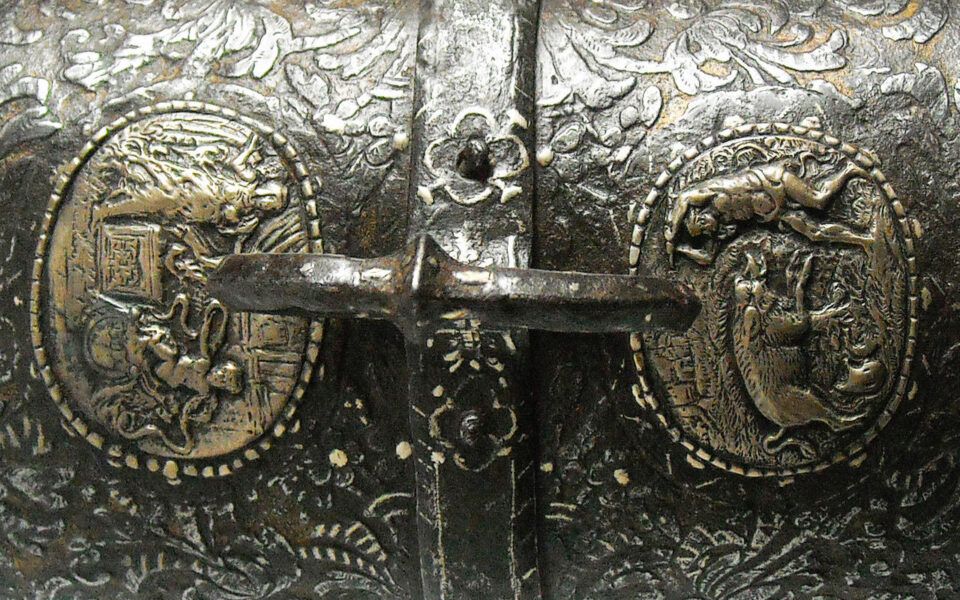
A refined French Casket in Iron, Gold and Silver
This wonderful jewelry box is a rare and unprecedented example of the late-Renaissance highest achievement in ironworking.
The rounded lid – typical of a well-defined category of caskets, made in the French area between the late 16th and the early 17th century- is enriched by a pair of silver oval plaquettes, embossed and chiselled, representing two scenes of Hercules’ life. The two heroic images suggest that the object was certainly commissioned by an important person,
perhaps identifying the figure of Hercules as the noble ancient model from which to draw inspiration.
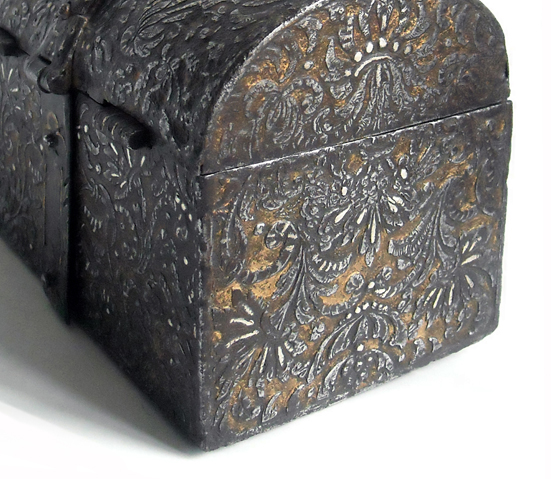
One oval plaquette depicts the little Hercules, son of Zeus and Alcmena, who prodigiously chokes two poisonous snakes, placed in his cradle by the furious goddess Hera with the will to kill the little boy, son of her husband’s betrayal; hearing his screams, Alcmena rushes and discovers for the first time the virtues of her child. The scene is common in ancient coins and was very often represented during the Renaissance. On the other oval plaquette Hercules, now an adult, is capturing the ferocious boar of Erimanthus, one of the famous Twelve Labors of the main hero of the ancient mythology. Usually these scenes were translated into precious metal by silversmiths, inspired by engravings or medals, objects traditionally collected by European princes and noblemen.
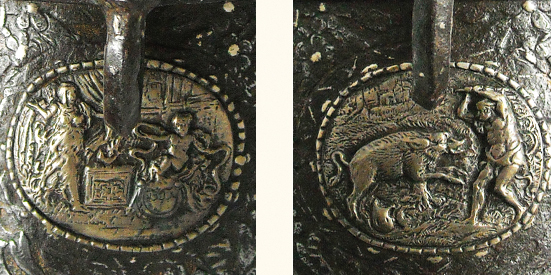
The combined use of the most sophisticated and luxurious techniques of iron decoration, such as low relief engraving, gilding, and agemina or silver damascening, virtuously transforms and embellishes the entire surface of the casket, assimilating it to a precious velvet.
In the mid 16th century in France as well as in Italy, these techniques were a prerogative of the most prestigious armourers of that time who – also in collaboration with silversmiths, goldsmiths, cutlers and ironsmiths – manufactured luxury weapons and armour for the most important personalities. A major example is Henry II’s famous armour suit, now in the Metropolitan Museum of New York.
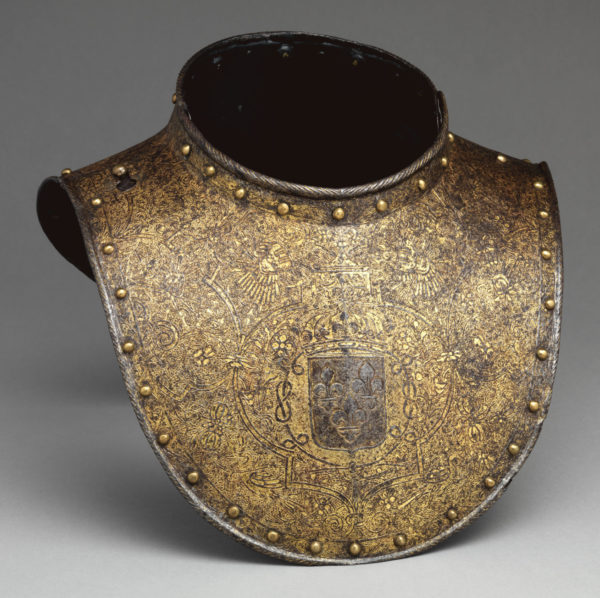
The rich decoration of our casket has a strong similarity with some early 17th century French gorgets: Metropolitan Museum of New York (inv. 14.25.883), Windsor Castle (RCIN 38793), Wallace Collection in London (inv. A236), and Musée de l’Armée in Paris (inv. G246). This likeness leads us to believe that the piece presented here was also made in one of those French workshops particularly flourishing, during the early 17th century, in two cities: Paris and Moulins.
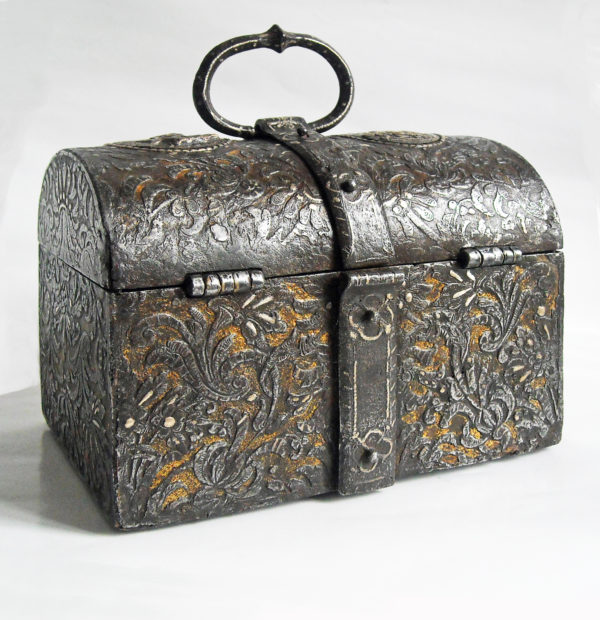
CASKET
Wrought, engraved and gilded iron, damascened in silver; embossed and chiselled silver
France (Paris or Moulins)
Early 17th century
Cm 15 x 11 x 12
© 2013 – 2024 cesatiecesati.com | Please do not reproduce without our expressed written consent
Alessandro Cesati, Via San Giovanni sul Muro, 3 – 20121 Milano – P.IVA: IT06833070151